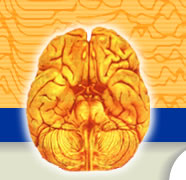|
|

RESEARCH ON TRANSCENDENTAL CONSCIOUSNESS
Global Neural Ground State:
Coherent Brain Mechanisms Associated With Transcendental Consciousness
Abstract
This paper seeks to provide a framework for discussing and understanding the brain state and attentional mechanisms that underlie the subjective experience and objective measurements of subjects practicing the Transcendental Meditation® (TM®) technique. During the TM technique, the mind effortlessly attends to a specific object and automatically transcends the normal boundaries of conscious perception: experiencing a shift from active, waking consciousness to one without boundaries, a state of pure consciousness. Past research suggests that the TM technique produces a unique state of profound rest and relaxation in subjects. Objectively, measurements of blood chemistry, skin galvanic response, and EEG recordings while subjects are practicing the technique indicate profound changes occur in the physiology. Subjectively, subjects report the experience of awareness alone without an object of perception.
This experience has been described as the fourth major state of consciousness, “restful alertness”. The Vedas, more than 5000 years old, are the classic texts describing this fundamental human experience. The Vedas call this experience of awareness without an object of perception pure awareness. According to the Vedas, this state of restful alertness or transcendental consciousness is considered to be the fundamental mode or ground state of human conscious experience. Thought processes represent fluctuations of this underlying, abstract, pure field of intelligence, similar to the way unified field theories describe matter emerging as fluctuations in the unified field of natural law.
Research on the TM technique has documented changes in electroencephalographic, respiratory, cardiovascular and other physiological parameters indicative of a unique de-excited state of the nervous system. During the process of transcending, sustained periods of marked coherence in brain activity and spontaneous respiratory suspension are closely correlated with subjective reports of awareness without thought. A model is proposed to explain the process of transcending that is based upon cognitive and neural mechanisms similar to the well-known orienting reflex (OR).
In this model, the state of restful alertness is produced by a coordinated response of orienting and habituating processes. The prefrontal cortex (PFCX) and the basal forebrain (BF) interact to produce a sequence of progressive de-excitations of neuronal activity. The brainstem (BS) core, in particular the mesencephalic reticular formation and the locus coeruleus, are involved in maintaining awareness by producing ORs to the object of perception (stimulus) used in meditation at each stage in the sequence of de-excitation and generating global neural coherence. The regulation of attentional processes during transcending is via an integrated hierarchy of control converging on the thalamocortical system. An important aspect of the orienting mechanisms in the model are neural reference systems, coordinated by a hippocampal-based comparator, that evaluates the changing configuration of both stimulus and brain state. The coherent integration of cortical-thalamic processing loops would lead to a global state of neural integration corresponding to a transcendental state of awareness.
Consistent with OR theories, the process of transcending would markedly enhance the signal-to-noise ratio of the neural system and facilitate the conscious analysis and perception of modes of cognitive activity not ordinarily available to conscious awareness leading to marked psychological and physiological benefits. This model of transcending is supported by a large body of cognitive neuroscience research on brain state and attentional mechanisms.
|
